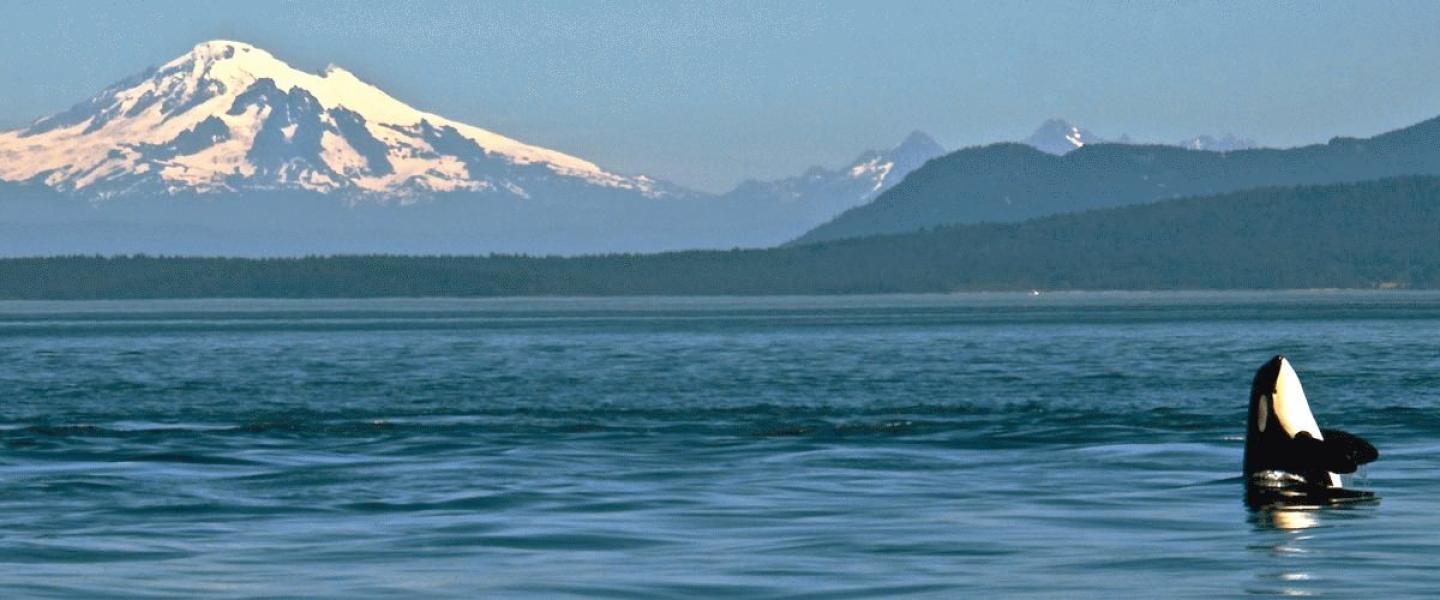
September 18th, 2021
Abby | M/V Kestrel | 2pm | 9/18/2021
Captain Solan and I zoomed south in San Juan Channel, cumulonimbus clouds rising steadily in front of Mount Baker. We headed over to Goose Island where double-crested cormorants stood atop their haystack-style nests and glaucous gulls screeched loudly at the prospect of an opportunistic snack. Harbor seals, or “rock sausages,” lazily laid on the shoreline, intermittently raising an eye at our presence. A large bull kelp forest blanketed the water surrounding the island, bulbs filled with carbon monoxide and waving steadily in the wake.
After viewing Goose Island, Solan and I heard that there were some Biggs Killer Whales in the Strait of Juan De Fuca near Victoria, B.C. We headed in that direction, and upon arrival saw members from four matrilines (family groups)!
- Esperanza T018 (1955, Female)
- Nootka T019 (1965, Female)
- Galiano T019B (1995, Male)
- Spouter T019C (2001, Male)
- Nootka T019 (1965, Female)
- Panthera T060 (1980, Female)
- Yelnats T060C (2001, Male)
- Onca T060D (2004, Male)
- Lynx T060E (2008, Male)
- Tigris T060F (2012, Female)
- Artemis T065A (1986, Female)
- Ooxjaa T065A2 (2004, Male)
- Amira T065A3 (2007, Gender Unknown)
- Ellifrit T065A4 (2011, Female)
- Elsie T065A5 (2014, Male)
- Callisto T065A6 (2018, Female)
- Chunk T065B (1993, Female)
- Birdsall T065B1 (2011, Male)
- Calf Not Yet Named T065B2 (2019, Unknown Gender)
Those that are indicated in bold are the whales we saw, for a total of 11 individuals! Mothers (matriarchs) are indicated by the first bullet point while offspring and in some cases, grandchildren are indicated by proceeding bullet points. Notice how Elsie (T065A5) was travelling with his aunt and cousins! The T065B’s tend to spend a lot of time in SE Alaska and come down to the Salish Sea in the fall, so it’s no wonder this juvenile wanted to spend some time with his auntie… maybe they just haven’t seen each other in a while.
There was a lot of playful behavior on the water today with all of these matrilines socializing and potentially getting reacquainted. On our way back to the harbor we saw some Steller Sea Lions, the largest species of sea lion in the world. They were hauled out on the rocks and a few were even doing some cartwheels in the water. We admired them for a few minutes, although the smell lingered for some time as we zipped back towards Friday Harbor, exhilarated by today's encounter.